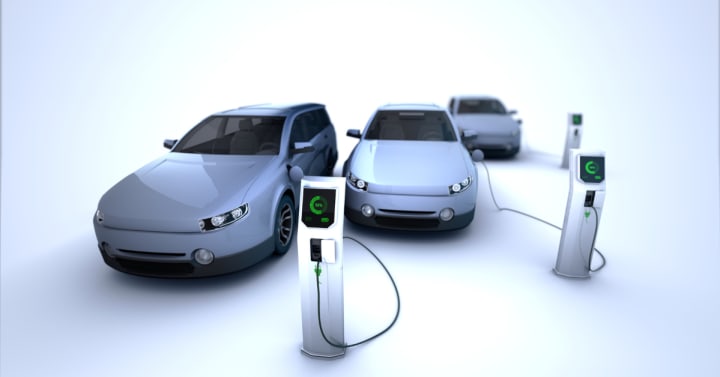Bertrand Boisseau
on 31 January 2024
Driving into 2024 – The automotive trends to look out for in the year ahead
With multiple technological innovations all converging at the same time, we are living in an exciting era for the automotive industry. From AI to 5G, and plenty in between, we can expect to see a host of groundbreaking trends emerge this year.
As electric vehicles (EVs) completely disrupt the market and the OEMs’ business strategies, the customer focus is shifting away from traditional internal combustion engine (ICE) vehicles, challenging the way that cars are being built and designed.
More importantly, with software updates and connectivity allowing for seamless services and entertainment, customers are expecting different approaches to the way they interact and experience their mobility. Let’s dive into some of the key automotive trends we’ll be seeing in 2024.

Over-the-air automotive software updates
Over-the-air (OTA) updates are at the forefront of the industry’s shift towards software. No longer confined to hardware constraints that required a visit to the dealership, vehicles can now be remotely updated with incremental and regular software patches.
OTA is one of the few advancements that is clearly a win-win for both the manufacturers and the users. For OEMs, OTA updates are cost-effective, reducing the need for vehicle recalls and physical interventions. When done efficiently, OTA processes can streamline the warranty approach with enhancements and bug fixes. Meanwhile, users can experience a seamless and convenient customer journey. As updates can be distributed easily, the vehicles and their systems remain secure with regular patches. Likewise, additional features can be deployed, from infotainment apps to advanced driver-assistance systems (ADAS) and autonomous driving features that can help improve safety.
The potential of OTA updates is undeniable, unfortunately, due to the high number of electronic control units (ECUs) in a vehicle, it remains a very challenging solution. However, Dedicated Snap Stores can help OEMs and Tier 1s streamline the whole update process. By simplifying the deployment of packages from the backend to the devices, Dedicated Snap Stores can help with updating highly-complex vehicle configurations.

AI/ML is reshaping the driving experience
AI/ML is already everywhere in automotive, and it has the potential to completely transform the way we interact with our vehicles. As Large Language Models (LLMs) are being used daily by millions of users, integrating them in vehicle assistants can help the communication between the drivers and the vehicles. Thanks to natural language processing, we can expect very intuitive and responsive human machine interface (HMI) improvements in 2024.
With AD/ADAS systems relying on the analysis of large datasets to enable the navigation of vehicles in complex environments, AI/ML can be integrated to contribute to the decision-making processes, allowing for safer autonomous driving behaviours.
The Crucial Role of Environmental Parity
As the industry moves towards software-defined vehicles, environmental parity holds a critical role in enabling developers to obtain tested and validated software results in a realistic setting, and will probably be the most important automotive trend in 2024. Environmental parity refers to replicating the properties of physical hardware within a cloud environment to enable accurate testing. This concept becomes particularly crucial in the automotive industry, where even minor bugs can have serious safety-related consequences. By mimicking the target environment as closely as possible, developers can identify and address issues early in the development process.
2024 will surely be a year with a strong focus on cloud computing. Allowing developers to develop and validate first in the cloud, and try it on the streets later, this approach will accelerate development processes and increase the reliability of automotive software. It will also enhance the performance of simulation related analysis since the data obtained will be closer to real-life scenarios.
The connectivity backbone
At the heart of the software revolution lies the connectivity of vehicles and fleets. The rollout of 5G networks still ongoing in most countries promises faster data transfers and ultra-low latency, unlocking new use cases for vehicle and infrastructure communications.
Coupled with edge cloud technologies, 5G enables faster decisions, key for safe and reliable autonomous driving features. Faster speeds will also accelerate the deployment of entertainment, from augmented reality to immersive virtual reality displays.

The rise of Electric Vehicles
EVs are probably the most impactful trend in automotive right now, and all OEMs are heavily investing to adapt their manufacturing process to the differences between EV and ICE production. Moreover, EV sales are closely tied to global sustainability commitments. Climate change concerns are growing, and the industry needs to invest in cleaner and greener solutions. EVs offer a compelling option to reduce carbon emissions, especially when powered by low emitting energy sources.
The domination of Tesla is challenged by Chinese OEMs, and 2024 will probably see interesting battery advancements. But this transformation is proving to be challenging for traditional OEMs that will have to invest quickly and adapt to this paradigm shift. As few are profitable with EVs, the rise of electric vehicles might lead to the fall of automotive giants. What is certain is that EVs are here to stay and will become a mainstream option for consumers.
Steering towards tomorrow
The shift towards software and EVs will transform the way we consider automotive and mobility in general. With the move towards software-defined vehicles, the enhancements our transportation and automotive solutions will benefit from are sure to be exciting.
In this blog, we’ve briefly highlighted the key automotive trends that will define the industry in 2024, but the path ahead is more complex and there are additional technologies that will impact the future of automotive. If you’re looking for an in-depth insight into these trends, and require strategic guidance for navigating through them, make sure to download our latest whitepaper.
As software advancement and customer expectations push automotive forward, they are also accelerating the evolution of regulations and sustainability targets, creating complex challenges. But as challenging as it may be, 2024 is also filled with opportunities to drive innovation – exciting times ahead.

Further reading
Want to learn more about emerging automotive technologies? Read our whitepaper on 2024 trends.
Learn about EB corbos Linux – built on Ubuntu
How to choose an OS for software development in automotive
Implementing FOTA updates for vehicles using a Dedicated Snap Store



